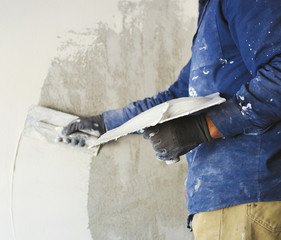A fresh surface can change the way a room feels. Cabinet refinishing is one of those subtle yet powerful transformations that turns dull interiors into welcoming spaces. It is more than just altering appearances; it’s about preserving character while introducing new energy. People choose this approach not only for aesthetics but also for the balance it offers between cost, sustainability, and creativity.

At its core, cabinet refinishing is the process of renewing the existing material rather than replacing it. The surface is stripped, sanded, repaired, and coated with new finishes to give it a second life. Unlike full replacements that require tearing out the old framework, refinishing keeps the structure intact while transforming the exterior. This makes it an appealing choice for those who value resourcefulness and subtle sophistication.
Many underestimate the potential that lies beneath an old cabinet surface. Years of wear, moisture, and repeated use can make cabinetry appear beyond saving. Yet refinishing techniques are capable of restoring even heavily aged surfaces into something remarkable. This practice has evolved far beyond a simple paint job; it now involves advanced coatings, sealing systems, and precision methods that ensure durability and beauty.
One of the most significant reasons homeowners and designers turn to refinishing is its cost efficiency. Full cabinet replacements can be expensive, especially when custom fabrication is involved. Refinishing, however, leverages what already exists, reducing material waste and labor costs. The result is a visually stunning transformation at a fraction of the price.
The environmental advantages of refinishing are another compelling reason behind its growing popularity. Instead of sending old cabinets to landfills, refinishing extends their lifespan and reduces the demand for new raw materials. This approach aligns with sustainable living values, allowing individuals to refresh their surroundings without leaving a large ecological footprint.
Cabinet refinishing also provides incredible flexibility in terms of design. A single space can be dramatically altered simply by changing finishes, colors, or surface textures. Light hues can make a small kitchen feel spacious, while dark tones can create an atmosphere of sophistication and depth. The options are endless, and refinishing provides the creative freedom to experiment without a complete overhaul.
One fascinating development in modern refinishing is the rise of specialized finishes. Traditional paint and stain are now joined by textured coatings, matte seals, and layered techniques that mimic high-end materials. These advancements allow cabinetry to resemble exotic woods or metallic surfaces without the associated cost or maintenance. It’s a perfect marriage of artistry and practicality.
Preparation is a crucial step that determines the quality and longevity of a refinishing project. The process often begins with removing existing coatings and repairing any structural flaws. Proper cleaning and sanding ensure the new finish bonds effectively and remains durable over time. Skipping these foundational steps can result in uneven results or premature wear.
Once the surface is ready, the choice of finish plays a pivotal role in the final outcome. Staining enhances the natural grain of wood and brings warmth and depth. Painting offers a completely new palette and allows customization down to the finest detail. Sealing with protective layers ensures resistance to moisture, heat, and scratches, extending the cabinet’s life significantly.
For those seeking a more bespoke look, techniques like glazing, distressing, and color washing introduce character and uniqueness. Glazing can add a sense of depth and dimension, while distressing creates a vintage aesthetic with intentional imperfections. These artistic touches transform basic cabinetry into statement pieces that tell a story within the home.
The refinishing process also opens opportunities to subtly modernize outdated designs. By updating hardware, adjusting trim details, or adding decorative panels, cabinets can bridge the gap between classic structure and contemporary taste. This blend of old and new ensures that the space feels refreshed without erasing its original charm.
Maintenance following refinishing is straightforward but essential for preserving the results. Regular cleaning with non-abrasive solutions prevents buildup that can dull the surface. Avoiding excessive moisture and heat exposure helps maintain the integrity of the finish. With proper care, refinished cabinets can maintain their beauty for many years.
Another intriguing trend is the use of eco-friendly and low-VOC finishes. As awareness about indoor air quality grows, refinishing solutions that minimize harmful emissions are gaining traction. These products deliver excellent performance while contributing to a healthier home environment. It’s a small detail that reflects a larger shift toward conscious living.
Cabinet refinishing isn’t limited to kitchens or bathrooms. It can elevate spaces such as home offices, living rooms, or built-in storage areas as well. Anywhere cabinetry exists, refinishing offers an opportunity to refresh and redefine the space without major structural changes. This adaptability is part of what makes it so valuable in interior design.
The skill and craftsmanship involved in refinishing should not be underestimated. Attention to detail is required at every stage, from surface preparation to final sealing. Experienced hands can achieve a flawless finish that looks as though the cabinetry was custom-made for the space. It’s a craft that blends technical precision with artistic vision.
Homeowners often discover that refinishing changes more than just the look of their cabinets. It influences the atmosphere of the entire room, affecting how people experience the space. A newly refinished surface can make a kitchen more inviting, a bathroom more serene, or a workspace more inspiring. Small changes in tone, texture, and sheen can transform how a room feels.
Even for those considering future renovations, refinishing offers a practical interim solution. It allows for significant aesthetic improvement without committing to a full remodel. This flexibility is especially valuable when budgets are tight or when long-term plans are still evolving. Refinishing bridges the gap between current needs and future visions.
There’s also an emotional dimension to cabinet refinishing that often goes unnoticed. Restoring original cabinetry can preserve memories and craftsmanship that newer models might lack. It’s a way of honoring the history of a home while updating it for modern living. This balance of heritage and innovation adds depth and meaning to any renovation project.
The resurgence of interest in craftsmanship and personalization has also fueled refinishing’s popularity. People increasingly value bespoke interiors that reflect their personality and style. Refinishing provides a canvas for that expression without requiring a full rebuild. It proves that customization doesn’t always require starting from scratch.
From a property value perspective, refinishing can deliver impressive returns. Updated cabinetry enhances the appeal of a space to potential buyers and renters alike. It signals care, maintenance, and attention to detail — qualities that can significantly influence perceptions of a home. This subtle yet impactful upgrade often pays for itself many times over.
For those who enjoy hands-on projects, cabinet refinishing can even become a fulfilling DIY endeavor. With the right tools, materials, and patience, many homeowners achieve professional-level results. The process can be rewarding not just for the final outcome but also for the creative journey it involves. However, for intricate or large-scale projects, skilled professionals bring an unmatched level of expertise.
Refinishing continues to evolve as new technologies and materials emerge. Advanced surface treatments now improve scratch resistance, durability, and ease of cleaning. Innovations in application methods make finishes smoother and more uniform. These developments ensure that cabinet refinishing remains a forward-looking solution rather than a traditional one.
The psychology behind refinished interiors is worth noting too. Humans respond strongly to their environment, and small visual updates can influence mood and productivity. A refreshed space feels cleaner, brighter, and more inviting. In this way, refinishing is not just a design decision but an investment in daily well-being.
Ultimately, cabinet refinishing is a testament to the idea that renewal doesn’t always require replacement. It demonstrates how existing materials, when treated with skill and creativity, can be transformed into something extraordinary. It merges practicality with artistry, function with beauty, and history with modernity. That balance is what makes it one of the most powerful yet understated forms of interior transformation.
What began as a simple way to refresh surfaces has become a sophisticated design strategy. It empowers people to reimagine their spaces without waste, excessive cost, or disruption. And it proves that sometimes, the most remarkable transformations come not from building something new but from rediscovering the potential in what’s already there. In the world of interior design, cabinet refinishing stands as a quiet but transformative art — one that breathes new life into the familiar and turns ordinary rooms into extraordinary spaces.


